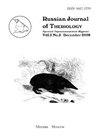Species of genus Martes in the Southern Urals and Trans-Urals during the Holocene
IF 0.6
4区 生物学
Q4 ZOOLOGY
引用次数: 2
Abstract
The study of the morphotypes of the crowns of the buccal teeth of three species of the genus Martes made it possible to trace the formation of modern ranges of pine marten M. martes, stone marten M. foina and sable M. zibellina during the second half of the Holocene. The pine marten range did not undergo any significant changes during the second half of the Holocene and included both Southern Urals and TransUrals. In the South Urals in the beginning and middle of the Late Holocene, the ranges of sable, stone marten and pine marten were overlapped. At the end of the late Holocene the sable range was shifted to the north, and the range of stone marten to the south-west, and in 18th century, only the pine marten inhabits the Southern Urals. In the second half of the Holocene until the 18th century, the Southern Trans-Urals were inhabited by only two species of the genus Martes — sable and pine marten, their ranges were sympatric. Modern boundaries of the ranges of sable, stone marten and pine marten in the Southern Urals and in the Southern Trans-Urals have been formed over the last 300 years. How to cite this article: Kisagulov A.V., Kosintsev P.A., Gimranov D.O. 2017. Species of genus Martes in the Southern Urals and Trans-Urals during the Holocene // Russian J. Theriol. Vol.16. No.2. P.139–148. doi: 10.15298/rusjtheriol.16.2.03全新世乌拉尔南部和乌拉尔地区马提斯属的种
通过对三种貂属颊齿牙冠形态类型的研究,可以追溯到全新世后半期松貂、石貂和紫貂的现代分布范围。松貂山脉在全新世后半期没有发生任何重大变化,包括南乌拉尔山脉和跨乌拉尔山脉。在晚全新世初中期的南乌拉尔地区,貂、石貂和松貂的分布范围是重叠的。在全新世晚期,貂的活动范围向北移动,石貂的活动区域向西南移动,在18世纪,只有松貂栖息在乌拉尔山脉南部。从全新世后半期到18世纪,南跨乌拉尔地区只居住着貂属的两个物种——貂和松貂,它们的分布范围是同域的。在过去的300年里,南乌拉尔山脉和南横贯乌拉尔山脉的貂貂、石貂和松貂的现代边界已经形成。如何引用这篇文章:Kisagulov A.V.,Kosintsev P.A.,Gimranov D.O.2017。全新世乌拉尔山脉南部和横贯乌拉尔山脉的马氏体属物种//俄罗斯J.Theriol。第16卷第2期。P.139–148.doi:10.15298/rusjtheriol.162.03
本文章由计算机程序翻译,如有差异,请以英文原文为准。
求助全文
约1分钟内获得全文
求助全文
来源期刊

Russian Journal of Theriology
Agricultural and Biological Sciences-Animal Science and Zoology
CiteScore
0.90
自引率
33.30%
发文量
0
期刊介绍:
The Russian Journal of Theriology publishes papers on all aspects of mammalian biology: taxonomy, zoogeography, ecology, behavior, morphology, development, physiology, paleontology, and evolution. Studies of extinct as well as extant taxa are included. Reviews are also published; these may be invited by the Editorial Board.
 求助内容:
求助内容: 应助结果提醒方式:
应助结果提醒方式:


